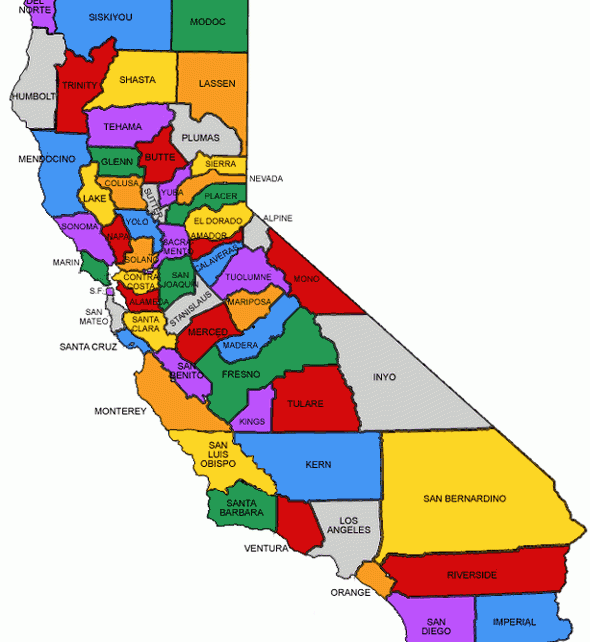
Trying to find out how many counties California actually has? You’d be surprised how many people ask the same question. Whether it’s for school projects, travel plans, or simple trivia, the magic figure 58 always surfaces, yetthose two digitsonly tells half the story.
The Golden State’s 58 counties create an incredibly diverse mosaic: sun-drenched coastal hubs, high-elevation wilderness zones, fruit-laden interior valleys, and thriving tech metropolises. Every county has a chapter in the state’s saga, forged throughimmigration waves, cutting-edge innovation, and waves of cultural fusion.
In the sections ahead, we’ll explore why California ended up with 58 counties, the services counties deliver day-to-day, and the outliers that set fascinating records. When we’re done, you’ll know the facts—and map your next California adventure with confidence.
County-Making in Early California
On statehood day in 1850, the map contained barely half the jurisdictions we know now. Rapid gold-rush immigration compelled legislators to carve out new counties. By the end of the 1870s, the count had risen to more than fifty counties, and that same year the final five were added, setting in stone the official total of fifty-eight.
Assembly journals reveal that many break-away regions sprang out of three major pressures:
- Geographic isolation left settlers days from the nearest courthouse.
- Revenue battles splitting river towns from hinterlands ignited partition drives.
- Language and immigrant communities demanded tailored governance.
In less than seventy years, the political map hardened. Today, every effort to create county #59 stalls, prompting analysts to call the era of county making decisively over.
From Kelp Forests to High Deserts: County Geography
Plot a route from rugged Del Norte on the Oregon line to sun-baked Imperial touching Mexico, and you’ll traverse every Köppen zone short of tundra. Coastal counties enjoy fog-cooled summers, while basin counties in the Central Valley bank on irrigation.
- Sierra jurisdictions such as Mono, Mariposa, and Calaveras store California’s snowpack.
- River-delta territories mix levee farms with wetlands.
- Off-shore authorities like Ventura manage marine sanctuaries.
Such variety explains how water rights, zoning, and ag yields diverge so sharply. Topography dictates everything from wage levels to weekend hobbies.
County Government and Core Services
In California’s layered structure, municipalities handle zoning, but counties shoulder vital “unseen” duties that hold civilisation together. From birth to death—vital records, coroner reports, property deeds—all reside at the recorder-assessor’s office.
Elected sheriffs patrol towns too small for police forces, while superior courts hear probate battles. Public-health branches coordinate Medi-Cal. Funding debates occur in monthly Board of Supervisors sessions.
Case Study: Tiny Alpine County
Los Angeles County alone employs 100 000+ workers, illustrating how flexible county governance proves. Uniformity would never work when populations range from under 1 200 to over 10 million.
Ultimately, county halls bridge Sacramento’s big laws and local reality. Grasping their portfolio helps residents demand accountability.
Where the People and Money Are
The state shelters over 39 million residents, but the headcount clusters unevenly. LA County by itself packs nearly 25 %. At the other extreme, remote Alpine hovers around here a thousand residents.
- Largest population: Los Angeles
- Fewest people: Alpine County
- Widest landmass: San Bernardino County
- Tightest borders: San Francisco
Economically, the disparities are just as sharp. South Bay enclaves report six-figure median incomes, while interior ag counties face commodity price swings. This revenue gap fuels housing affordability crises every decade.
Memorising these records pays dividends: county borders redraw home-buying budgets and business licences.
Touching All Counties in One Journey
For intrepid travellers, visiting every single county has become a badge. One ambitious loop kicks off in San Diego, heads north along Highway 1, curves inland at Big Sur, then zigzags across nut groves and tomato fields, before climbing into the Sierra Nevada for ghost towns and mining museums.
Regional Mini-Loops
- Southern Swing – San Diego to Santa Barbara; a baker’s dozen of stops in a long weekend of days.
- Heartland Stretch – Grapes to rice paddies; produce-market run.
- Northern Peaks – evergreen corridors; jaw-dropping vistas.
Finish the circuit in Imperial, after two thousand kilometres of asphalt. By then, you can confidently claim you know “how many counties California has”—because you’ve seen them all!
California County FAQ
Below you’ll find concise answers to the most common county-related queries.
How many counties does California have?
State records confirm fifty-eight counties—a total locked in for over a century. Whether you ask the Secretary of State, the Census Bureau, or a local historian: 58.
Which county has the largest population in California?
The population heavyweight is Los Angeles County, housing roughly one in four Californians. Its size stems from historic migration waves, a diverse economy, and global cultural pull.
Which CA county has the fewest residents?
The crown for smallest population goes to Alpine County, often cited at just about a thousand souls. High-elevation geography naturally restricts settlement, creating tight-knit communities.
Largest county by land size?
San Bernardino County spans the most ground encompassing deserts, mountains, and metro suburbs alike. From Joshua trees to ski lifts, few regions illustrate California’s contrasts so vividly.
How did California end up with 58 counties?
Early statehood growth pressures split larger districts into smaller units, ending when Imperial County formed in 1907. Every modern effort to create a new county stalls in committee or dies at the ballot box.
Is it possible to form a 59th county?
Technically, the California Constitution leaves the door open, yet practical barriers loom large. Financial viability studies plus state-level sign-off deter most would-be county creators. Hence, California has remained at 58 for generations.
What services do California counties provide to residents?
County governments deliver core public services: property assessments, public hospitals, welfare programs, and jails. Remove counties from the equation, and civil society would struggle to operate.